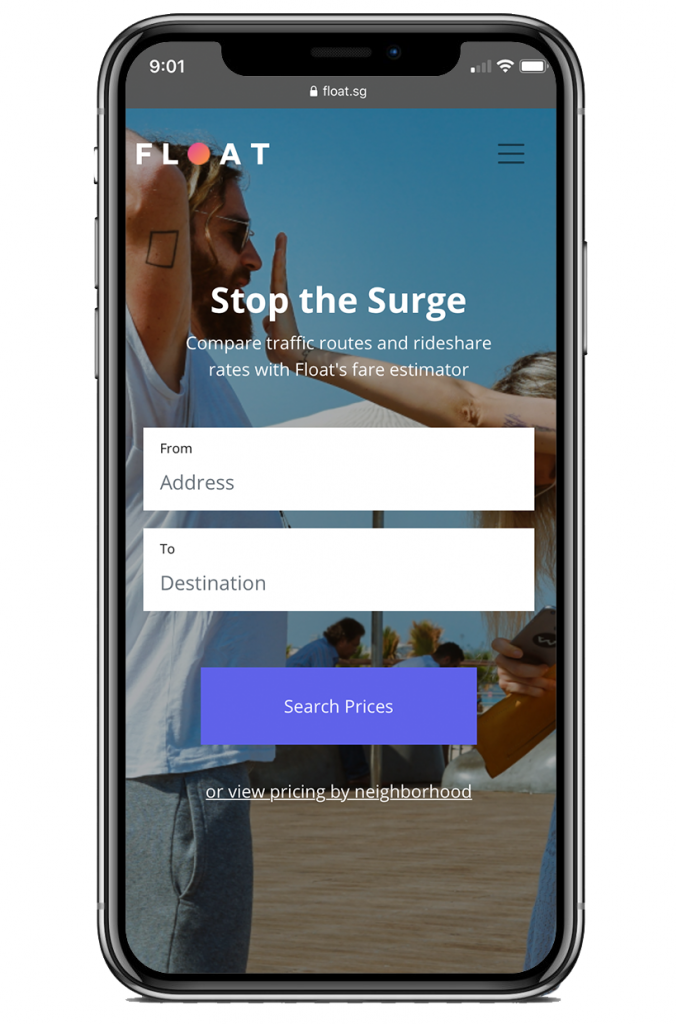It’s 8:45pm. Your train stalled in the middle of the tracks. By the time you trudge out of the station, a huge throng had already formed at the bus stop in front of the station. It’s impossible to get a place on the free shuttle buses. As if that was not bad enough, rain is pelting down as you take shelter at the bus-stop, mindful of social distancing. You stare incredulously at the amount reflected on your Grab app – $48 (more than three times your normal fare) there has got to be a better way!
During times like these, MRT breakdowns and a heavy downpour are a double whammy that can send prices for ride-booking services up by as much as 3.8 times the usual fare. This is what surge pricing is – commuters pay more to guarantee a ride when the demand is high.
What is Surge Pricing?
Also known as dynamic pricing, surge pricing was first introduced by ride-hailing giant, Uber, when it started operations in Singapore in 2013. In the same year, a small start-up Grab entered the scene and joined Uber in using surge pricing to adjust fares based on demand. Fares increase when the demand is greater than the number of available drivers around. Those who need a ride urgently and are willing to pay more when demand is high, will get a ride. In 2017, five taxi companies in Singapore also joined the surge pricing system. The move was initiated by Trans-Cab, the second largest operator and Premier Taxi, the second-smallest taxi operator. They were joined by SMRT, PRIME and HDT Singapore taxi. Collectively, they operate more than 10,600 taxis. They offer dynamic fare option through JustGrab function under the Grab app. Eventually, Singapore’s largest operator, Comfort DelGro, which once ran a huge campaign with the tagline “No Surge Pricing”, had since succumbed and joined the surge pricing bandwagon in 2018.
Understandably, cabbies are more attracted to the surge pricing booking platform as it is more profitable. Hence, gone are the days when one can easily get a street-hail taxi. At some point, it was rather common to see empty taxis swooshing by potential commuters, whose hands flailed desperately to get a cab during peak hours or just before the midnight hour. With an attractive surge-pricing model available on booking systems, taxi-drivers prefer sitting in the comfort of their taxis to wait for a high-priced booking than picking up a street hail that does not come with any booking fees or surge pricing.
The Issue with Surge Pricing
So, what is wrong with surge pricing? After all, it is economically sound: a situation of happy buying, happy selling. Moreover, other industries practised surge pricing model too: one has to pay premium rates for plane tickets and hotel rooms during peak periods like the December holidays or pay more to watch a movie on a weekend. However, it is socially inequitable to apply this principle to basic amenities like power, water and public transport as demand for these essential goods and services is always present and consumers are disadvantaged in a captive market.
Another problem with surge pricing is its opaqueness. Before the days of surge pricing, taxi fares were fixed and transparent. In contrast, the fees of private hire car services are fixed based on location and distance, but surge when demand increases. When taxis also adopt dynamic pricing, fares are no longer displayed on taxi windows, and consumers have little choice but accept whatever the algorithm calculates. And sadly, there is no way to verify if a surge in demand is at whatever multiple the algorithm claims it is. Hence, the frustrated end-user at the receiving end of surge pricing is powerless even if he or she suspects that the algorithm benefits the service providers.
Next, one wonders if the surge pricing model has blighted the transparent pricing system Singapore used to have. The Land Transport Authority (LTA) has always been against taxi touts who provide rides if commuters pay more. Is surge pricing then not legalised touting at its best? Left on its own, the surge pricing system might even evolve into a system that benefits those who can afford to pay more. If taxis or private cars are still alternative modes of public transport, then prices must still remain affordable for the hoi polloi. For now, commuters can still choose to pay the normal metered fare rate when using the ComfortDelGro’s Taxi Booking app, though it is highly likely that drivers will only accept dynamic fares during surge periods.
The Solution to Surge Pricing
However, where there is a problem, a solution follows. Travel apps like Float Mobility offer a free price comparison tool that allows consumers to compare rideshare rates across Grab, Gojek and taxis at different times of the day, enabling passengers to find the cheapest option for travelling. This provides the much needed visibility for where and when surge pricing occurs, giving control back to the passenger. Surges are short-lived and location specific, so if one can wait or walk, it might be a good idea to wait for fees to drop or take a stroll to a less popular location before hailing a ride.

Being the smart commuter that you are, you did not hit the ‘book’ button in the end, but decided to grab a hot drink nearby and wait out the rush. Half an hour later, you are on your way home in a taxi and it cost you $28 – at least 40% lower than when the surge was at its peak. At the end of the day, the choice is up to us and we control what we can. As end-users, we are not able to control the weather and train breakdowns, but we can look out for ourselves and find alternatives to beat the surge pricing.




Why when surge then you remember there is a thing call Taxi? Serve you right!